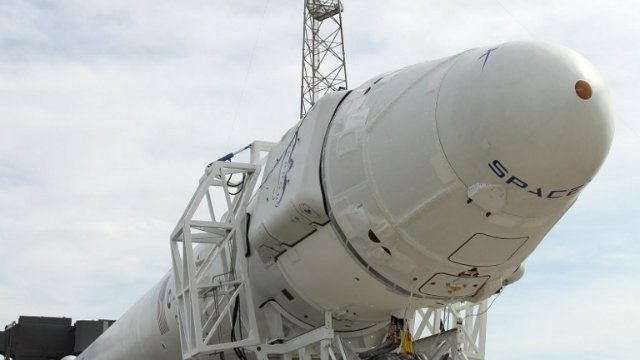SUMMARY
This is AI generated summarization, which may have errors. For context, always refer to the full article.

MIAMI, United States (UPDATED) – SpaceX said on Saturday, January 10, that it failed in a landmark attempt to recycle its Falcon 9 rocket, after the equipment collided with an ocean platform and broke to pieces.
Still, the California-based company said the test was a step forward toward one day transforming the aerospace industry and making rockets reusable much the same as airplanes.
“Rocket made it to drone spaceport ship but landed hard,” SpaceX CEO Elon Musk wrote on Twitter.
“Close but no cigar this time. Bodes well for the future tho.” (READ: SpaceX to try ocean platform landing of Falcon rocket)
Musk, a billionaire entrepreneur who co-founded PayPal and runs Tesla Motors, wants to be able to reuse rockets much the way commercial airlines fly the same planes again and again.
SpaceX hopes its efforts will open a new era in modern rocketry, which wastes millions of dollars after each launch when pieces of the rocket are left to fall into the ocean after blastoff.
Saturday’s experiment involved firing the rocket’s engine 3 times to guide the first stage to a landing spot about 200 miles (322 kilometers) off the coast of northern Florida.
The landing site for the Falcon 9 was a powered barge floating in the ocean near the city of Jacksonville, Florida.
This “autonomous spaceport drone ship” measures 300 by 100 feet (90 by 30 meters), with wings that extend its width to 170 feet.
Since the launch took place in the dark, Musk said the team did not get good video images of the landing and impact.
“Ship itself is fine. Some of the support equipment will need to be replaced,” he wrote on Twitter.
“Didn’t get good landing/impact video. Pitch dark and foggy. Will piece it together from telemetry and… actual pieces.”
SpaceX has had some success with two previous attempts to make a controlled landing of the Falcon 9 in the ocean, slowing it to a hover before it splashed down.
Cargo on its way
The launch’s primary mission was to send the unmanned Dragon cargo ship to orbit, and that went smoothly after two delays in recent weeks due to rocket problems.
The gleaming white Falcon 9 rocket launched in the predawn darkness from Cape Canaveral, Florida, propelling the cargo ship toward the International Space Station with supplies and food for the 6 astronauts aboard.
The Dragon cargo vessel should arrive at the space station at 6:12 am (1112 GMT or 7:12 pm Philippine time) on Monday, NASA said.
The cargo ship is carrying more than 5,000 pounds (2,268 kilograms) of supplies to the astronauts living in orbit.
“Up to this point we have a 100 percent successful mission under way,” said NASA commentator George Diller after the spacecraft’s solar arrays were deployed.
Cargo trips have become routine for SpaceX, and this marks the fifth mission as part of a $1.6 billion dollar contract with NASA to supply the ISS over a dozen trips. (READ: SpaceX returns to Earth loaded with lab results)
SpaceX’s success is especially critical because its competitor, Orbital Sciences, which has a $1.9 billion contract with NASA to supply the space station, suffered a catastrophic rocket failure in October, forcing an end to its supply missions until further notice. – Rappler.com
Add a comment
How does this make you feel?
There are no comments yet. Add your comment to start the conversation.